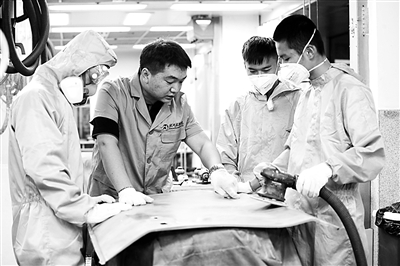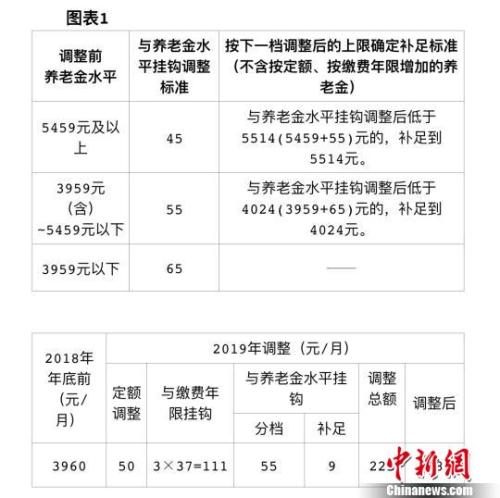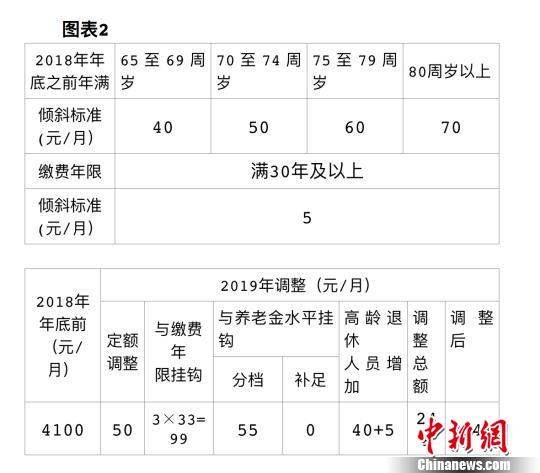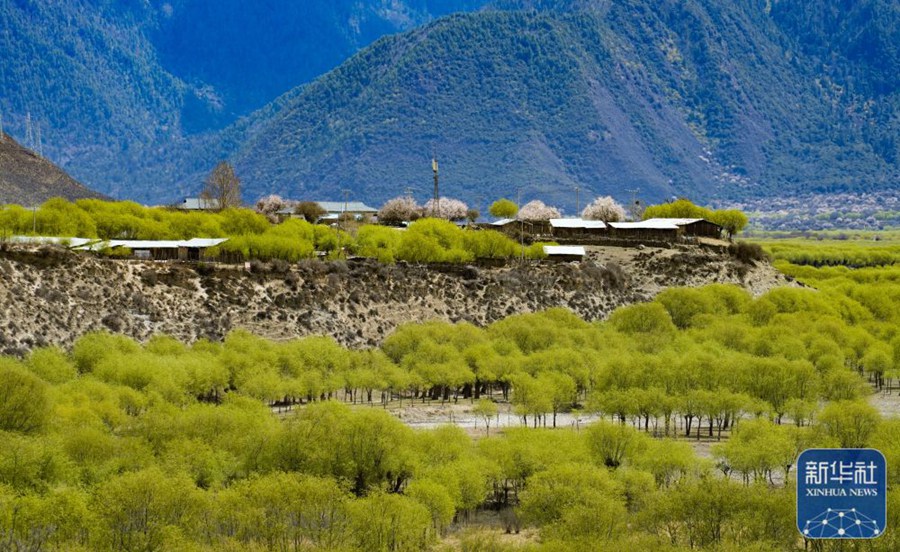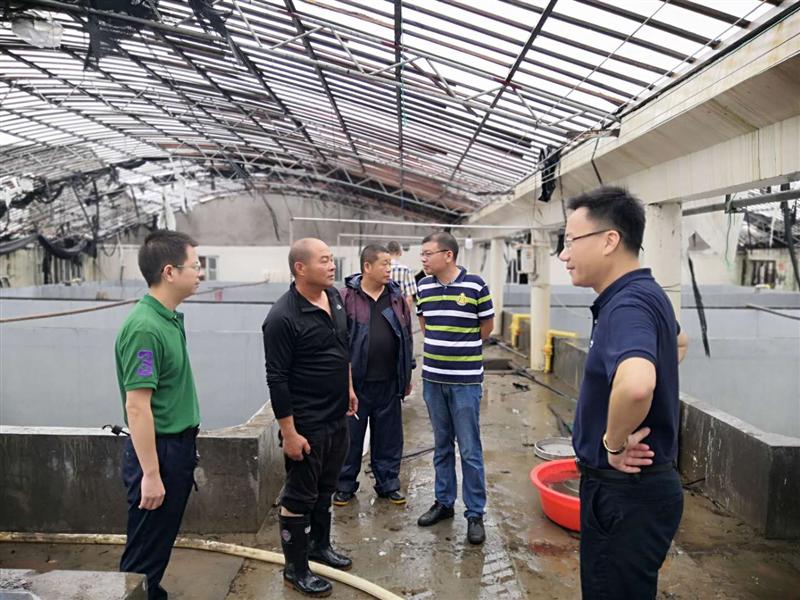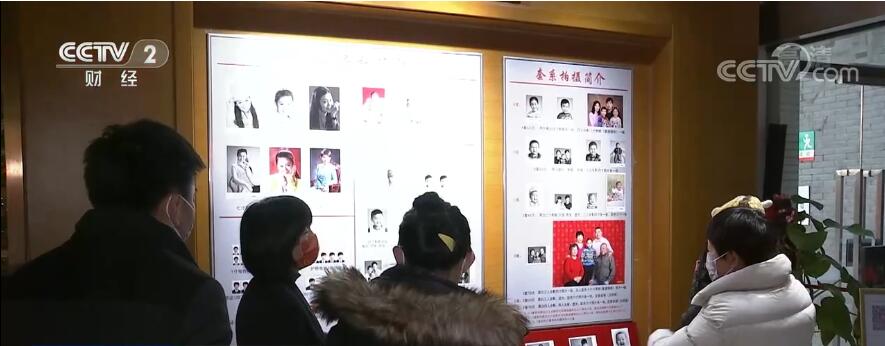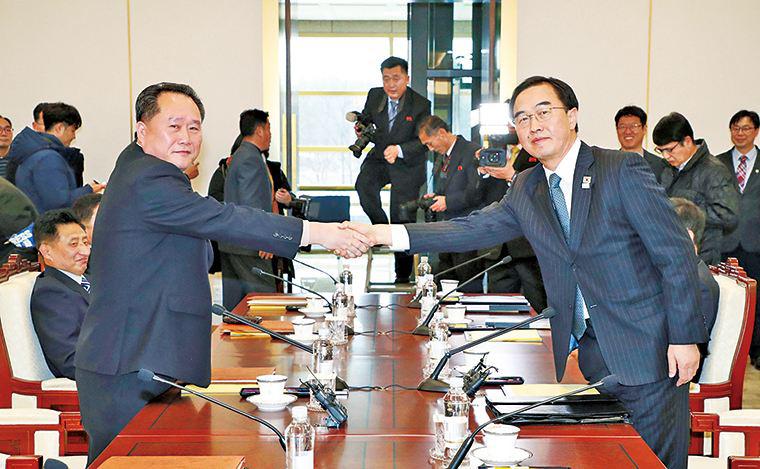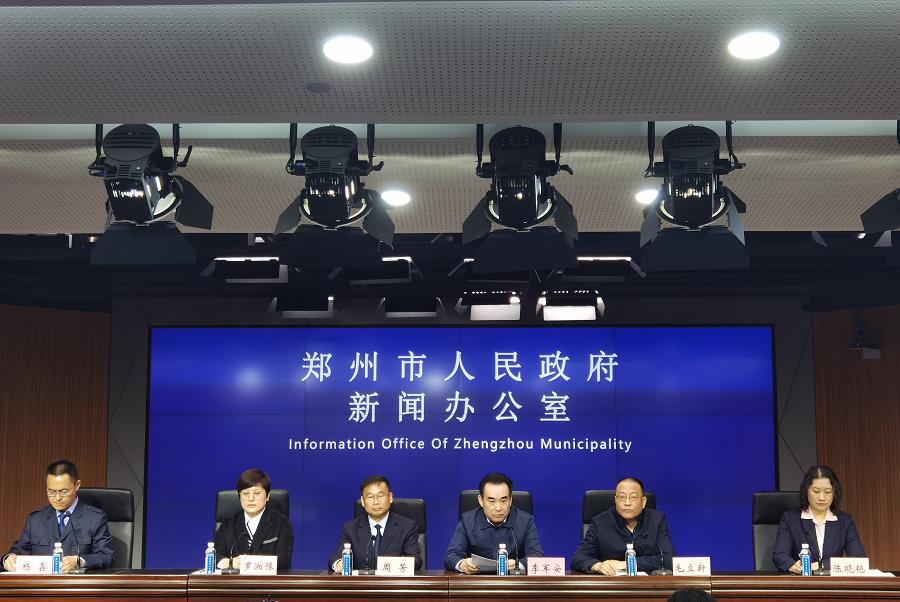
Published by:
Li Jun ‘an is a member of the Party Group of Zhengzhou Municipal Market Supervision Administration, a second-level senior sponsor and a spokesperson.
Zhou Fang, Head of Food Production Supervision Department of Zhengzhou Municipal Market Supervision Administration
Mao Lixin Deputy Secretary of the Party Committee of the Law Enforcement Inspection Detachment of Zhengzhou Municipal Market Supervision Administration
Luo Xiangyu Director of Zhengzhou 12315 Complaint Reporting Rights Protection Center
Deputy Secretary General of Zhengzhou Consumer Protection Association, Chen Xiaoyan
Moderator:
Yang Xin, Director of the Press and Publicity Department of Zhengzhou Municipal Market Supervision Administration
Time: March 10th, 2021 at 10:00.
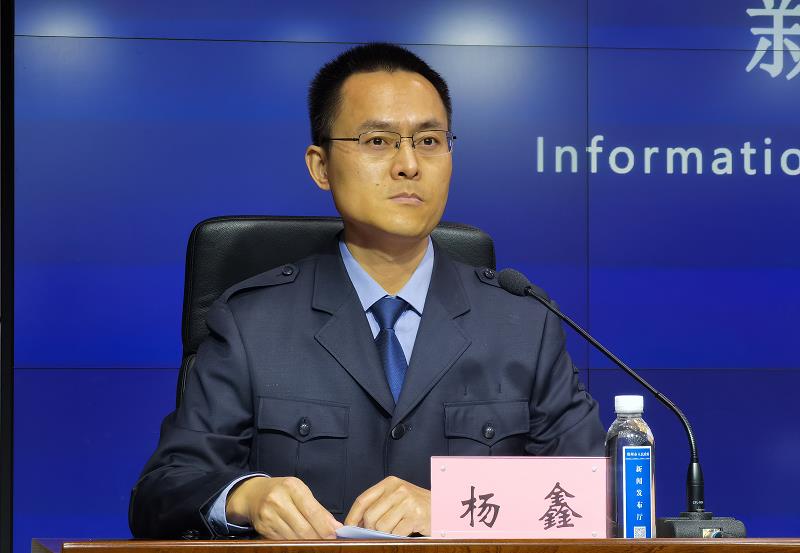
Moderator Xin Yang
Friends of the press, distinguished guests,
Good morning!
Welcome to today’s press conference.
The annual "March 15th International Consumer Rights Day" is coming soon. This year, the theme of Consumer Rights Protection Year announced by China Consumers Association is "Protecting Safe and Smooth Consumption", which is intended to strengthen the supervision responsibility of government departments and make every effort to create a safe consumption environment. Around this theme, combined with the responsibilities of the market supervision department and the consumer association, our supervision department and the Municipal Consumers Association summarized the analysis report on the acceptance of consumer complaints and reports in 2020 and the development of law enforcement inspection in 2020, and announced it to the public.
First of all, let me introduce the leaders and guests attending today’s press conference:
Li Jun ‘an, member of the Party Group of Zhengzhou Municipal Market Supervision Administration, second-level senior sponsor and spokesperson; Zhou Fang, head of the Food Production Supervision Department of Zhengzhou Municipal Market Supervision Administration; Mao Lixin, deputy secretary of the Party Committee of the Law Enforcement Inspection Detachment of Zhengzhou Municipal Market Supervision Administration; Luo Xiangyu, director of the 12315 Complaint Reporting Rights Protection Center; and Chen Xiaoyan, deputy secretary-general of Zhengzhou Consumer Protection Association.
Also present at today’s press conference are friends from the central, provincial and municipal media. Welcome everyone!
Next, please invite Li Jun ‘an, a member of the Party Group of Zhengzhou Municipal Market Supervision Administration, a second-level senior sponsor and a spokesperson, to release an analysis report on the acceptance of consumer complaints and reports in 2020.
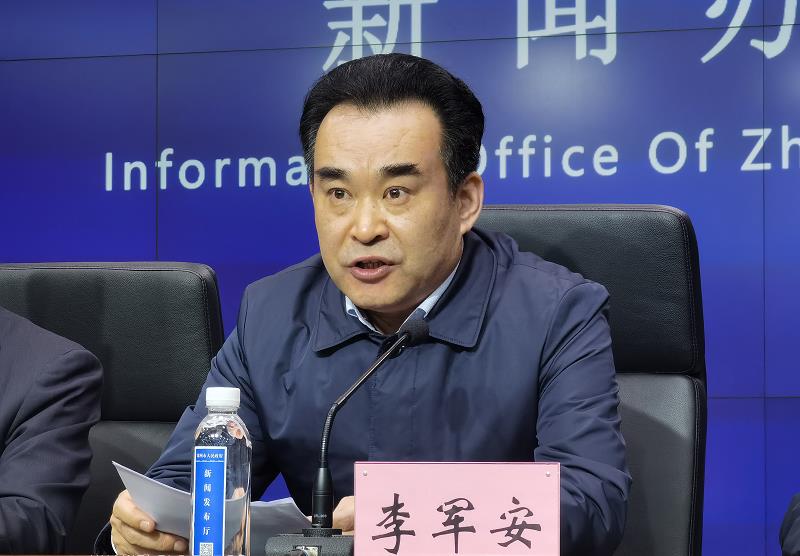
Li junan
Media friends:
Good morning everyone!
The Party Group of Zhengzhou Municipal Market Supervision Administration attaches great importance to the protection of consumers’ rights and interests. In 2020, according to the reform plan and work requirements of market supervision institutions, the Municipal Bureau established a new Zhengzhou 12315 Complaint Reporting Rights Protection Center. With the number of "12315", we provided market supervision consultation, complaint and report services to the outside world, and opened 30 telephone seats to provide 24-hour hotline service for consumers in our city throughout the year. At the same time, the Municipal Bureau focuses on serving people’s livelihood, insists on keeping integrity and innovation, and actively builds a consumer rights protection network. In all major enterprises and supermarkets in the city, a "consumer rights protection service station" has been established, and enterprises have been mobilized to actively solve "online consumption disputes", organized "safe consumption creation" activities, and promoted the commitment mechanism of "no reason to return goods offline". Through various efforts, the city’s consumer market has been further purified, the market consumption environment has been optimized, and the sense of gain and happiness in the consumer environment has been improved.
In 2020, the city’s 12315 system received 413001 consumer inquiries, complaints and reports, including 258168 inquiries, 81800 complaints and 73033 reports. 81,593 complaints were settled, with a settlement rate of 99.74%. The amount of disputes involved in the complaints was 334.1707 million yuan, and the amount of economic losses recovered was 72.5416 million yuan. 72,743 reports were completed, with a completion rate of 99.6%.
Judging from the way of acceptance, the 12315 hotline received 325195 consumer appeals this year, and it is still the main channel for complaint acceptance; The national 12315 Internet platform received 61436 consumer appeals, which was the second acceptance channel; The mobile client, WeChat, Alipay applet and mobile APP received 21,026 consumer appeals, and the receiving volume increased significantly. There were 5,344 incoming letters and other forms, and the proportion of receiving letters decreased compared with previous years, indicating that the trend of consumer complaints is developing in the direction of convenience, digitalization, networking and intelligence, and also embodying the advantages of "internet plus" government services.
Based on the summary analysis of hot issues of consumer complaints in 2020, it is mainly reflected in the following five aspects:
I. Complaints and reports on residents’ services and daily necessities
A total of 8959 such complaints and reports were accepted throughout the year. First, fitness and sports venues. The problems of recharging and refunding fees caused by the epidemic situation, such as not being able to operate normally, changing business address, leaving private education, etc., mainly include "it is easy to apply for a card, it is difficult to return the card", "closing the store and running away", "restricting consumption" and "standard terms". The second is clothing, shoes and hats. There are many disputes about return and exchange caused by inconsistent ingredients, quality defects, physical differences and after-sales service. The third is a cultural communication company. Tickets are sold online, but affected by epidemic control or other reasons, which leads to the cancellation of performances or disguised price increases, and it is difficult for consumers to refund tickets. The fourth is household items. The quality and specifications of the physical object are inconsistent with the samples, the goods are not delivered in time, and the appearance defects are difficult to return.
Second, food complaints and reports
A total of 8996 such complaints and reports were accepted throughout the year. First, frozen and quick-frozen foods. Problems such as foreign body, mildew and deterioration of food are relatively concentrated; Second, merchants fictionalize and exaggerate the efficacy of food. There are problems such as false propaganda and illegal propaganda; The third is the labeling of food packaging. There are problems such as incompleteness, failure to indicate the name and address of the factory, no production date and no production license number; The fourth is to order food online. Problems such as non-delivery, less delivery, non-payment and substandard hygiene of catering units.
Iii. Complaints and reports on vehicles
A total of 2728 such complaints and reports were accepted throughout the year. The first is the problem of car purchase and consumption. After the intention to buy a car, the merchant promised to get a refund, but in the end, it was impossible to get a refund, the consumer could not pick up the car within the promised time, and the 4s shop did not agree to change the model, which made it difficult for consumers to get a refund. The second is the issue of fees. After the repayment of the car by installment is completed, the problem of charging the handling fee for releasing the charge; The third is vehicle maintenance. During the warranty period, vehicle maintenance, on the grounds that there are no accessories, will not be repaired or buck passing, as well as the abnormal quality of the car after the three-guarantee sale.
Four, household appliances and communication equipment complaints.
A total of 2,874 such complaints and reports were accepted throughout the year. The first is the quality of household appliances. Purchase, installation and delivery of household appliances, quality or defects, and damage after use; The second is the after-sales service of household appliances. The main problems are no maintenance, lack of accessories, no return and other issues; The third is the distinction of after-sales responsibility. No "three guarantees" on the grounds of man-made damage and unclear definition of maintenance responsibility; Fourth, it is difficult to return communication equipment. It is suspected that the purchased mobile phone is a refurbished or second-hand mobile phone, and it is difficult to communicate and collect evidence and return it; The fifth is the problem of mobile phone accessories. Mobile phone repair and replacement of second-hand accessories, the use of counterfeit and inferior mobile phone accessories and other issues.
V. Complaints and reports on decoration and building materials
A total of 948 such complaints and reports were accepted throughout the year. Mainly reflected in the decoration materials and cabinets, doors and windows, furniture and other issues. The first is advertising. Merchants use absolute terms such as "best", "highest quality" and "leading technology" in advertisements, and use exaggerated propaganda and false propaganda such as "never fading", "nontoxic and environmentally friendly" and "antibacterial and breathable". The second is the issue of service commitment. After-sales service has problems such as deliberate delay or unreasonable refusal, failure to deliver goods on time, failure to install on time, failure to fulfill service commitments, etc. The third is product quality. There are some problems in building materials, such as unqualified quality, fake materials, fake and inferior quality, and excessive odor.
In order to effectively strengthen the protection of consumers’ rights and interests, and smooth the channels for reporting complaints, the Municipal Bureau has arranged to launch a special campaign to ensure safety and stability in the whole city in early March. Focus on key areas, key places, key units, key equipment and key areas to carry out centralized management, eliminate potential safety hazards and protect consumer safety. During the special action, the general public are invited to actively participate. If potential risks in the market consumption field are found, or infringement of consumers’ rights and interests is infringed, complaints can be made by calling the "12315" hotline; You can also report complaints through the National 12315 Internet Platform (www.12315.cn).
Dear friends, 2021 is the centenary of the founding of the Communist Party of China (CPC), the first year of the 14th Five-Year Plan, and a crucial year in the process of the modernization of Zhengzhou as a national central city. At present, it coincides with the National People’s Congress and the "March 15th" International Consumer Rights Day. The city’s market supervision system will conscientiously implement the "four strictest" requirements put forward by the Supreme Leader General Secretary, improve political stance, highlight problem orientation, safeguard consumer safety, and serve people’s livelihood. We will severely crack down on illegal acts that infringe on consumers’ rights and interests according to law. Escort consumers with excellent results, show a good image of market supervision, promote the high-quality development of Zhengzhou, and present gifts to the centenary of the founding of the Communist Party of China (CPC).
Thank you!
Moderator Xin Yang
Next, please ask Mao Lixin, deputy secretary of the Party Committee of the Law Enforcement Inspection Detachment of Zhengzhou Municipal Market Supervision Administration, to release the development of law enforcement inspection in 2020.
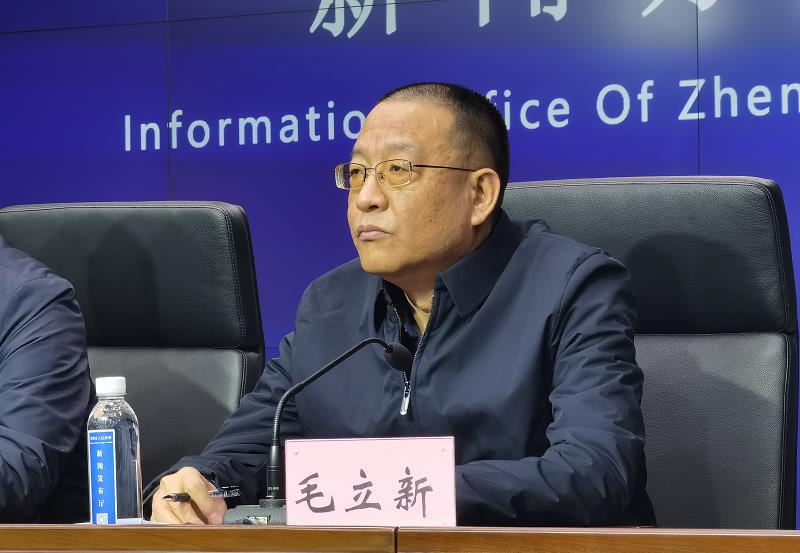
Mao Lixin
In 2020, we thundered to crack down on violations of laws and regulations in the field of market supervision, and the special rectification achieved remarkable results. Help prevent and control the epidemic, focus on the prices of daily necessities such as vegetables, and decisively dispose of the case of "high-priced cabbage", which won praise from netizens all over the country and effectively stabilized the market price. Organize special rectification of epidemic prevention supplies certification, and handle 26 inter-provincial transfer cases. Special enforcement of advertising was carried out, and 337 false and illegal advertisements were closed, with a fine of 6.177 million yuan. Xiangsheng Street Store, a Pingxin pharmacy in Henan Province, issued a false advertising case, which was listed in the "Typical Cases of National False and Illegal Advertisements in 2020" by the General Administration. 9 cases of medical services and education fees were handled, with a fine of 639,000 yuan. In the city, 2,960 cases of medical equipment, cosmetics and food hygiene were filed, 2,454 cases were closed, 21.002 million yuan was fined, 25 cases were handed over to the public security, 15 cases were filed, 7 people were detained and 7 people were arrested. 35 cases of illegal salt were settled. The tobacco market banned 481 unlicensed merchants, handled 2,249 cases with a case value of 44.627 million yuan, fined 4.235 million yuan, handed over 136 cases to public security organs, detained 27 people, arrested 6 people and sentenced 11 people. We cracked down on "counterfeiting and confusion" and unfair competition in key areas, handled 36 cases and fined 693,000 yuan. Strictly crack down on illegal pyramid selling activities, put on record 3 cases, and educated and dismissed 51 pyramid selling personnel.
In 2021, we made great efforts to prepare for war, integrated the law enforcement and inspection functions of the original six major areas of industry and commerce, quality supervision, food and medicine, price, intellectual property rights and salt law enforcement, set up a comprehensive law enforcement and inspection detachment, adhered to the leadership of the party, adhered to the people-centered, adhered to administration according to law, practiced the "four strictest" general requirements, clenched our fists, polished our swords, and were fair, just, open and civilized.
Moderator Xin Yang
Next, please ask Chen Xiaoyan, Deputy Secretary-General of Zhengzhou Consumers Association, to issue a consumption reminder for 2021.
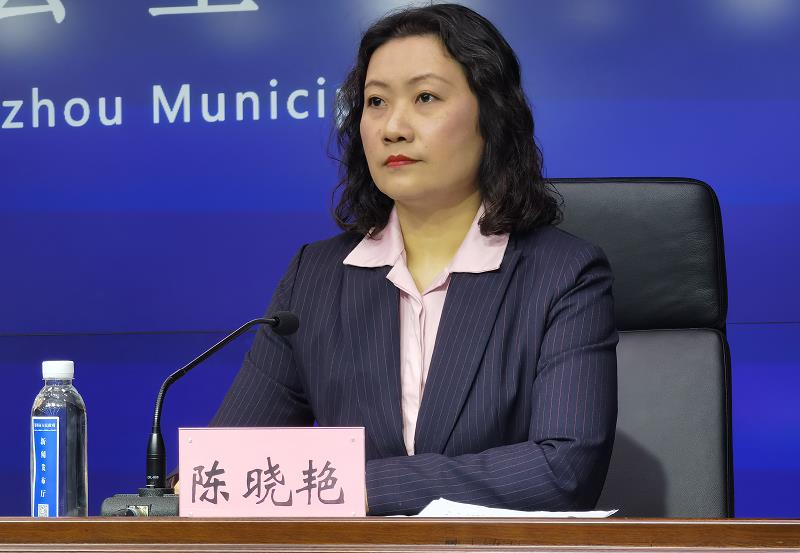
Chen Xiaoyan
In 2020, Internet service complaints ranked the third among all kinds of complaints accepted by Zhengzhou Consumers Association in the whole year, including 834 complaints and inquiries involving Zhengzhou Branch of Great Wall Broadband Network Service Co., Ltd. (hereinafter referred to as "Great Wall Broadband"). The main problems that consumers reflected on "Great Wall Broadband" were: First, poor network signal; Second, the refund time is long, and the phenomenon of delaying and shirking is serious; Third, the calculation of refund is unreasonable; Fourth, in the case that broadband services cannot be guaranteed, we will continue to induce uninformed consumers to pay broadband fees. In response to consumer complaints, Zhengzhou Consumers Association has repeatedly talked about "Great Wall Broadband" and urged it to introduce solutions as soon as possible. Up to now, a large number of consumer complaints have been delayed.
Zhengzhou Consumers Association believes that "Great Wall Broadband" company’s internal management is lax, its service concept is not correct, its awareness of safeguarding consumers’ rights and interests is weak, and its principle of good faith management is weakened, which fails to fulfill its legal responsibility as the first person responsible for safeguarding consumer rights and interests, resulting in the infringement of consumers’ right to know, fair trade and claim. Therefore, Zhengzhou Consumers Association reminds consumers: In view of the fact that "Great Wall Broadband is easy to pay and difficult to protect rights", please carefully choose "Great Wall Broadband" service.
In addition, we should pay attention to the following points when choosing broadband services: First, we should choose carefully. Go to a regular, reputable and complete after-sales service communication operator, and don’t believe in small advertisements posted at roadside agents or on the street, as well as broadband services sold at home. The second is to pay attention to retaining contracts and consumption credentials. Sign a written contract, and don’t trust verbal promises easily. When signing a contract, you should carefully read the terms of the contract, ask for an invoice in time after payment, keep relevant consumption and transaction credentials, and try to avoid transferring service fees to personal accounts through WeChat or Alipay. The third is to protect rights according to the law. When consumers encounter disputes, they can safeguard their legitimate rights and interests by negotiating with operators, asking consumers’ associations for mediation, complaining to relevant administrative departments, and bringing a lawsuit to the people’s court.
Moderator Xin Yang
Next, please ask reporters to ask questions about your concerns. Before asking questions, first inform your unit.
Dahe. com: In recent years, with the rise of live webcasting, there are more and more online shopping disputes. Can you briefly introduce this situation?
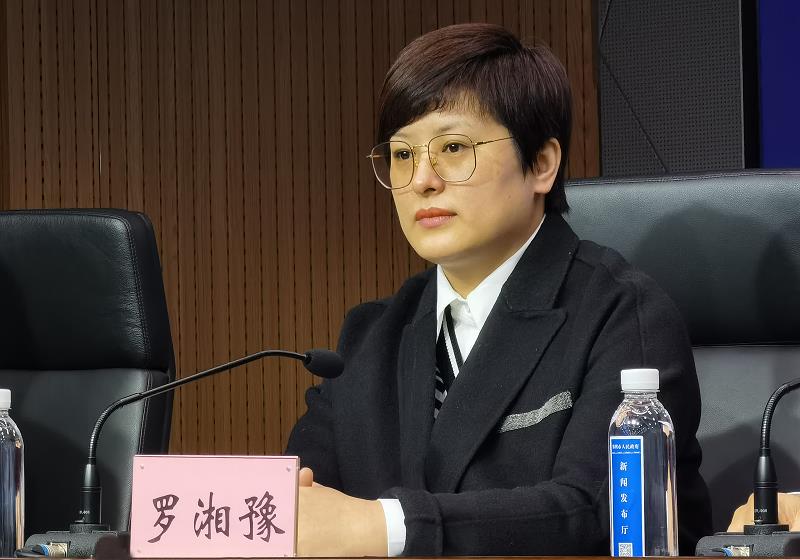
Luo Xiangyu
Online shopping is now a favorite consumption mode of our consumers, especially the rise of live webcasting with goods in recent two years, which has further promoted the network economy. But in fact, there is no big difference between webcasting and online shopping, both of which belong to remote shopping. Due to the rise of such remote shopping, consumer complaints are increasing day by day.
Taking 2020 as an example, the city’s 12315 system accepted about 15,000 online shopping complaints, accounting for nearly 20%. The main complaints are as follows: First, some anchors or platforms have exaggerated or false propaganda problems. If the goods are falsely described, the function and utility of the products are exaggerated; Promised concessions, gifts, etc. Second, some e-commerce operators delay or refuse to perform the contract. Such as arbitrarily cutting orders and refusing to deliver goods, and selling goods that are not on the right board. Third, some e-commerce operators do not undertake after-sales service obligations. If you don’t implement the "seven-day return without reason" rule and don’t fulfill the "three guarantees" obligation, etc.
According to the Law on the Protection of Consumers’ Rights and Interests and the Measures for the Administration of Online Transactions, if consumers buy goods or receive services through online trading platforms, and their legitimate rights and interests are damaged, they can complain to the platform merchants and also to the third-party trading platforms, so consumers should first negotiate with the merchants or third-party platforms through themselves, and handling consumer disputes is also the legal obligation of the merchants and third-party platforms; If negotiation fails, consumers can complain to the market supervision department where the platform merchant is located, or the market supervision department where the third-party trading platform is located, call the local 12315 or make a complaint through the "National 12315 Internet Platform", and the market supervision department will accept it as soon as possible and deliver it to the jurisdiction for mediation of consumer rights protection. At the same time, violations of laws and regulations found in the process of online transactions can also be reported to the market supervision department, which will be investigated and verified by the jurisdiction and dealt with according to law.
Consumers are also reminded to choose formal and qualified e-commerce platforms and sellers with high credibility when shopping online; Before placing an order, you should read the product details, promotion rules, return and refund methods and after-sales service policies, etc. Don’t trust the advertisements of merchants or the sensational agitation of anchors with goods, and avoid impulsive consumption and passionate consumption. At the same time, when purchasing, you must choose a formal trading platform, inquire about the business qualifications of the business operators, understand the true attributes of the purchased goods, try to keep relevant transaction records, publicity records, service commitments, etc., and keep sales vouchers to avoid the inability to prove when problems arise. After a dispute arises, try to settle it through consultation. If it fails, you can complain to our market supervision department or consumer association, and our market supervision department will do its best to safeguard the legitimate rights and interests of consumers.
Hong Kong Economic Herald: 3.15 is coming soon. Can you remind consumers of the problems that should be paid most attention to in safeguarding their legitimate rights and interests according to the daily complaints received by consumers?
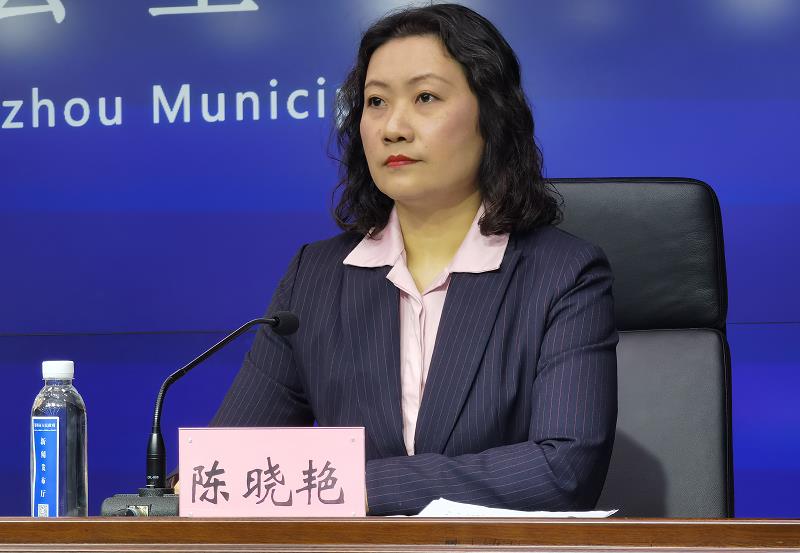
Chen Xiaoyan
According to the analysis of daily complaints, especially the cases of difficulties in safeguarding rights, we notice that if consumers can improve their awareness of safeguarding rights and self-protection, pay more attention to pre-consumption claims and conscientiously perform inspection responsibilities, then even if they encounter consumer disputes, whether they negotiate with operators to safeguard their rights or seek help from consumer associations or relevant departments, consumers who are "weak" can provide more powerful assistance for the settlement of consumer disputes, which is convenient for relevant departments to help consumers solve consumer disputes.
For example, we recently received a complaint: when a consumer bought food in a supermarket, the name of the food printed on the consumption certificate provided was inconsistent with the food he bought, and the price was also inconsistent. Such proof affected the consumer’s right to claim compensation after being infringed. In the consumption survey we carried out a few years ago, we also found that the name of the goods on some supermarkets’ printed receipts was inconsistent with the goods actually purchased. In this case, if consumers did not check carefully on the spot, they would not be able to provide effective proof in time when they suffered personal and property losses.
At present, consumers should pay attention to the consumer complaints when we buy goods or receive services in our daily life: for commodity consumption, we should take the initiative to obtain and keep the consumption credentials when we consume, and at the same time, we should pay attention to checking the machine-made receipts and invoices provided by operators on the spot to ensure that the names of the bills are consistent with the names of the purchased goods, the specifications and models are consistent, and the sales prices are consistent with the personal payment prices. For service consumption, such as beauty salons, body building, home improvement, education and training, accommodation and tourism, etc., in addition to paying attention to actively obtaining and retaining consumption credentials, we should sign a service agreement with the operator at the same time, and indicate or sign a supplementary agreement in the format contract for the personalized commitment service of the operator. Prevention in advance is a strong support for safeguarding rights after encountering problems!
This year, the City Consumers Association will also strengthen consumer publicity and education, carry out in-depth consumer publicity and education into community activities, send laws and regulations, rights protection methods and consumer warning tips to consumers, and make continuous efforts to improve the consumption environment in our city!
Elephant News: A few days ago, some media reported clues about the problem of bottled water. What measures did our regulatory authorities take? Can you introduce the specific situation of the investigation?
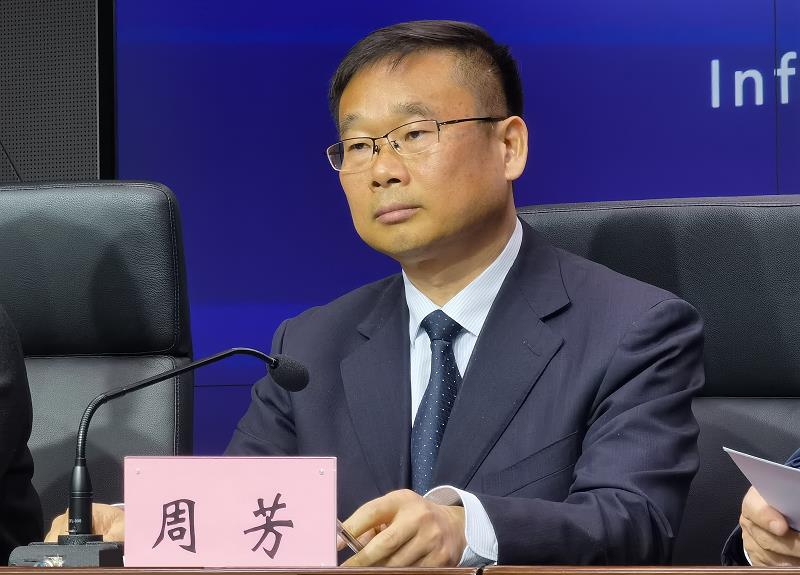
Zhou Fang
Municipal Market Supervision Bureau has always attached great importance to food safety supervision, including bottled water, and organized special rectification, supervision and sampling inspection of bottled water production for many years. The production conditions, food safety control ability and quality and safety level of bottled water production enterprises in the city have been continuously improved. On the morning of February 6th, the online media of Dongfang Jinbao published an article on "Insider Investigation of Bottled Water Fraud", which reflected that the illegal production and operation of bottled water in the market had not been completely eradicated. After learning the relevant public opinion information, the leaders of the Municipal Bureau attached great importance to it and acted quickly that morning to organize and investigate the relevant clues reflected by public opinion. Even during the Spring Festival holiday, the investigation of relevant clues was not relaxed, and the promotion meeting was held several times in a row to arrange the deployment, and the front-line supervision was organized to ensure that the investigation and rectification were in place.
On February 6th, the online media of Dongfang Jinbao reported that the main clues were that water shops directly sold tap water and groundwater privately. Individual bottled water sales points have poor sanitation; Individual bottled water products have no identification information such as manufacturer and address; There are hidden quality problems in barreled water buckets and lids.
In response to the clues reflected by the media, our bureau immediately set up a special working class, which is personally responsible by the main leaders and composed of relevant personnel such as food supervision, news propaganda, law enforcement inspection and the public security team stationed in the bureau. According to the problems and clues reflected by the media, we went to Jinshui District, Economic Development Zone, Guancheng District, Airport District, xinzheng city, zhongmou county and other places to conduct investigations one by one with the regulatory authorities of the jurisdiction, and investigate and deal with illegal acts in time.
After investigation, Aoquan bottled water store in Zhengzhou Economic Development Zone illegally filled bottled water without any logo without obtaining the food production and operation license. The store is suspected of violating the relevant provisions of the Food Safety Law and engaging in food production and business activities without permission. The market supervision department of Zhengzhou Economic Development Zone has filed a case for investigation and punishment according to law, and made a penalty decision of confiscating 165,300 yuan. Currently, relevant administrative penalty procedures are being implemented.
The manufacturer of the "Yuzhiyang" bottled water involved in the report is Henan Yuzhiyang Beverage Co., Ltd., and its production address is Houwei Village, Xie Zhuang Town, Xiangyun Road Office, Zhengzhou Economic Development Zone, and it has not obtained the Food Production License. The company is suspected of violating the relevant provisions of the Food Safety Law and engaging in food production activities without permission. The market supervision department of Zhengzhou Economic Development Zone has filed a case according to law, and based on the illegal facts and illegal income, it has made a penalty decision of confiscating 250,200 yuan, and is currently fulfilling relevant administrative punishment procedures.
Sun Ping ‘an Department Store in Mengzhuang Town, xinzheng city did not fulfill the obligation of incoming inspection when purchasing, and operated bottled drinking water with labels that did not meet the requirements. The market supervision department of xinzheng city ordered the parties to correct the illegal behavior, and gave them an administrative penalty of warning, confiscation of illegal income of 507.5 yuan and fine of 10,000 yuan.
Shigengxin bottled water service station in Jinshui District, Lanpei bottled water service station and Lantian water station in No.135 Buchang Street, Guancheng Huizu District have not obtained food business licenses, and the local market departments have ordered them to apply for registration certificates of small food shops within a time limit.
Other problems reflected by the media, food safety violations have not been found in the field verification.
In order to further strengthen the supervision of barreled drinking water production and business operation units and effectively ensure the food safety of the people, on February 10th, our bureau issued the "Special Remediation Plan for Barreled Drinking Water Production and Business Operation in 2021", arranged and deployed the special rectification work of barreled drinking water production and business operation for 10 months, and adopted measures such as special inspection, comprehensive sampling inspection, intensified disposal, and informing industry organizations to strengthen self-discipline, so as to standardize the production of barreled drinking water, severely investigate and punish unlicensed production, sales and illegal filling without permission. Since the implementation of the rectification, the city has dispatched more than 1,000 law enforcement officers and 383 law enforcement vehicles, inspected 720 bottled water production and business units, sampled 241 batches of bottled water and source water samples, found 35 problems, ordered 35 rectifications, put 4 cases on file for investigation, and banned 10 production sites suspected of illegally producing bottled water in conjunction with local governments.
In the next step, we will also give full play to the role of complaint reporting and unblock all kinds of complaint reporting channels such as 12315. Give full play to the management advantages of township (street) party committees and governments, such as being close to the masses, gridding, long-distance system and long-distance system, solve the problems of "black dens" in food production and operation, strong concealment of illegal and criminal acts, and difficulty in daily supervision, establish a long-term mechanism of "whistling at the grass-roots level and responding by departments" to find and deal with problems, and effectively improve the food safety level of the whole city.
Moderator Xin Yang
Due to the time, today’s press conference is over. If you need to continue the interview after the meeting, please contact the department in charge of news propaganda of Zhengzhou Municipal Market Supervision Administration at 67886297.
Today’s press conference is over, thank you!
